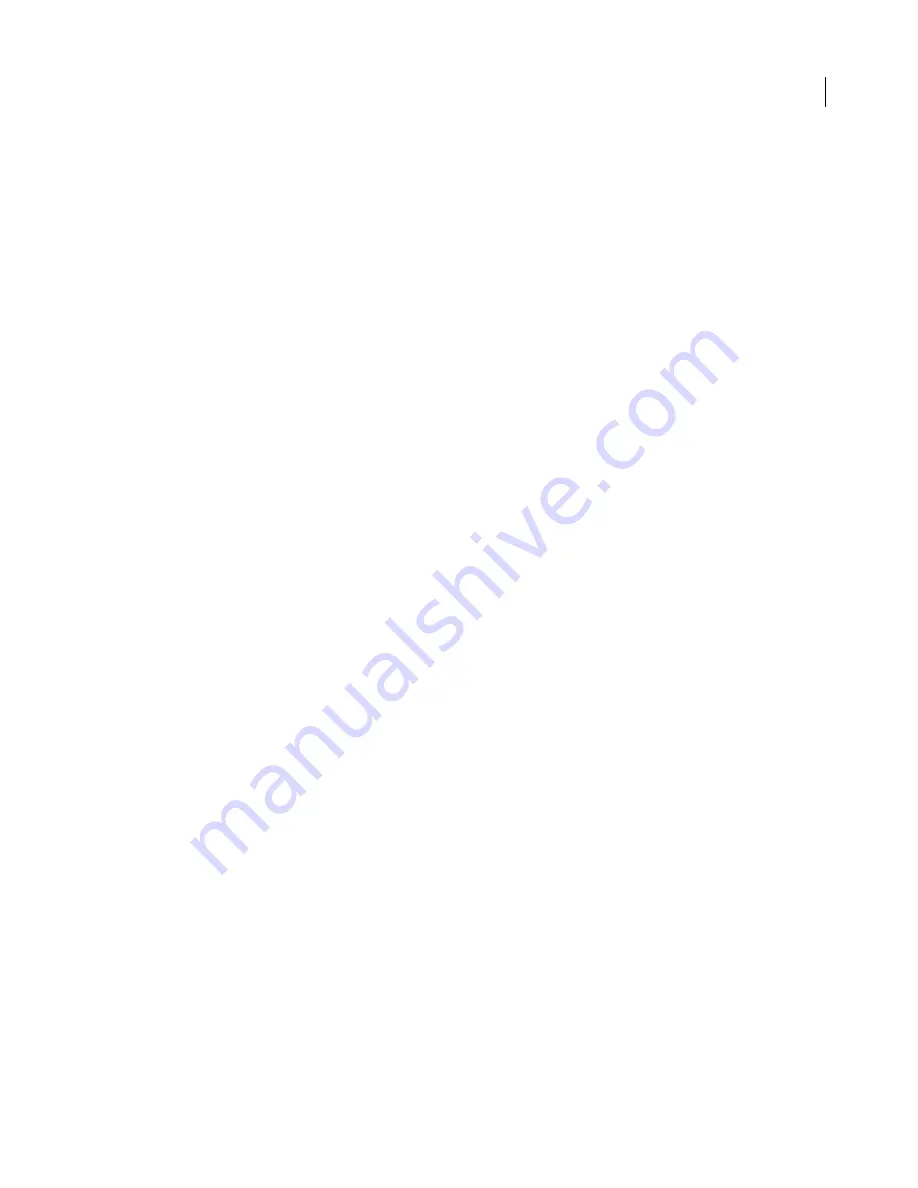
ADOBE AFTER EFFECTS 7.0
User Guide
517
Physics controls for the Shatter effect
Physics controls specify the way the pieces move and fall through space.
Rotation Speed
Specifies the speed at which pieces rotate around the axis set by the Tumble Axis control, allowing
you to simulate different rotation speeds for different materials. In nature, similarly shaped pieces spin at different
speeds based on their mass and air friction. For example, a brick spins faster than Styrofoam.
Tumble Axis
Specifies the axis that the pieces spin around. Free spins the pieces in any direction. None eliminates all
rotation. X, Y, and Z spin the pieces only around the selected axis. XY, XZ, and YZ spin the pieces only around the
selected combination of axes.
Note:
Any application of z-axis rotation appears only when a second force hits the layer. The pieces do not rotate from
the first blast if only z-axis rotation is selected.
Randomness
Affects the initial velocities and spins generated by the force sphere. When this control is set to 0,
pieces fly directly away from the center point of a blast (assuming a positive force). Since real explosions are rarely
this orderly, Randomness allows you to vary things a little bit.
Viscosity
Specifies how fast pieces decelerate after being blown apart. The higher the Viscosity value, the more resis-
tance the pieces encounter as they move and spin. If Viscosity is set high enough, the pieces quickly come to a stop.
To replicate an explosion in water or sludge, set Viscosity to a high value. In air, set it to a medium value, and for an
explosion in space, set it very low, or to 0.
Mass Variance
Specifies the theoretical weight of the pieces as they explode. For example, a large piece is heavier
than a small piece and therefore does not fly as far or as fast when it encounters the blast. Mass Variance’s default
setting of 30% gives a realistic approximation of this law of physics. Setting Mass Variance to 100% greatly
exaggerates the difference between the behavior of large versus small pieces. Setting it to 0% makes all pieces behave
the same, regardless of their size.
Gravity
Determines what happens to the pieces after they break up and blow apart. The higher the gravity setting,
the faster the pieces are sucked in the direction set by Gravity Direction and Gravity Inclination.
Gravity Direction
Defines the direction in (x,y) space that the pieces travel when affected by gravity. The direction
is relative to the layer. If Gravity Inclination is set to -90 or 90, Gravity Direction has no effect.
Gravity Inclination
Determines the direction in z space that the pieces travel once they explode. A value of 90
explodes the pieces forward, relative to the layer. A value of -90 explodes them backward, relative to the layer.
Textures controls for the Shatter effect
Textures controls specify the texture of the pieces.
Color
Specifies the color of the piece as defined by the Front Mode, Side Mode, and Back Mode menus. This color
may or may not be visible depending on the Mode settings: When a Mode setting is Color, Tinted Layer, Color +
Opacity, or Tinted Layer + Opacity, the selected color is factored into the appearance of the piece.
Opacity
Controls the opacity of the corresponding Mode setting. A Mode setting must be Color + Opacity, Layer +
Opacity, or Tinted Layer + Opacity for the opacity to affect the appearance of the piece. You can use the Opacity
control in conjunction with texture maps to create the look of semitransparent materials.
Front Mode, Side Mode, Back Mode
Determine the appearance of the front, sides, and back of the pieces. Color
applies the selected Color to the applicable side of the piece. Layer takes the layer chosen in the corresponding Layer
menu and maps it to the applicable side of the piece. Tinted Layer blends the chosen layer with the selected Color;
the effect is similar to viewing the layer through a colored filter. Color + Opacity combines the selected Color and
the Opacity amount. With Opacity at 1, the applicable side is given the selected Color. With Opacity at 0, the appli-
cable side is transparent. Layer + Opacity combines the chosen layer and the Opacity amount. With Opacity at 1, the
Summary of Contents for AFTER EFFECTS 7.0
Page 1: ...Chapter 1 User Guide...






























